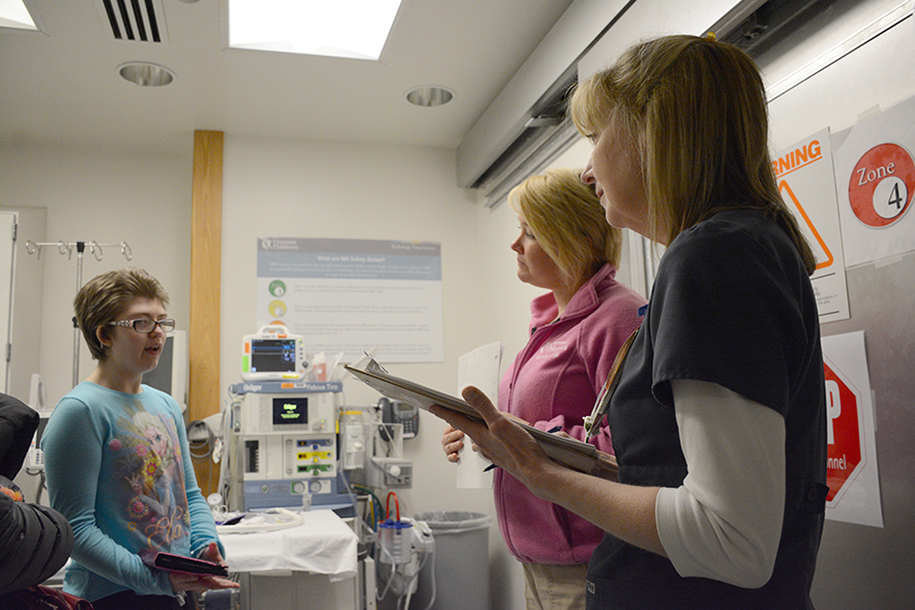

Every year, the last week of July is marked as “MRI Safety Week” in the Cincinnati Children’s radiology department. Safety is our top priority in the MRI department because we are working with incredibly strong magnets to get images of our patients. We commemorate this week because of a safety event that happened in an MRI scanner, which drew worldwide attention to the danger of the magnet.
Michael Colombini was 6 years old, going in for an MRI in a New York area hospital on July 31, 2001. While the patient was in the room, an oxygen tank was brought into the scan room. The powerful magnetic field sucked the oxygen tank into the scanner, leading to the death of Michael.
This tragedy is why we practice thorough MRI safety measures. Life is precious, and by taking proper measures, we can keep patients and a parent or guardian accompanying the patient safe when entering the room. The measures we take have been guided by the American College of Radiology as well as Dr. Blaise Jones, who created a formal MRI safety program following the terrible safety event in New York. When you’re with us in MRI, you can expect:

Safety Zones: When you’re walking back to an MRI department, you may see signs saying something about “zones.” As you get closer to the MRI room, the zones get more restricted. Zone 1 is the general population. Zone 2 is unscreened MRI patients and family. Zone 3 is screened MRI patients and personnel. Zone 4 is the actual MRI room, where the magnet field is and there is a safety hazard if just anyone enters without proper screening protocol.

Gowning: Each patient changes into a gown or a pair of scrubs to assure all metal has been removed from them. Metal is sneaky, and clothing manufacturers put metal fibers in certain clothing these days to help wick sweat. Buttons or zippers can distort imaging. We want to keep you safe and make sure all metal is removed.

Screening: Every patient and a possible parent or guardian to accompany them must go through a screening process, which is essentially a series of thorough questions concerning implanted devices, pregnancy, external devices, and habits/health pertaining to metal. It may seem a little extreme in the moment, but we are being thorough to protect you!

Detectors: Before entering an MRI room, we will “wand” you with a metal-detecting wand. This is our final safety check before entering the magnetic field. This is to catch the little things, like bobby pins, hair clips, necklaces, watches, etc. Once you are deemed safe, we will enter the room!
Education: Our hospital requires clinical employees to take a yearly training module on MRI and the importance of safety. If you are not around the environment every day, it can be harder to understand how critical it is to be on high alert when in MRI. Education is of the utmost importance when it comes to MRI safety.
To celebrate, our radiology department does an MRI word search; daily “Is This MRI Safe?” questions; daily “Ask an MRI Tech!” questions; special word scrambles; and Fireside Stories with Dr. Jones talking of MRI safety events in the past.
Here’s to another year of safety!